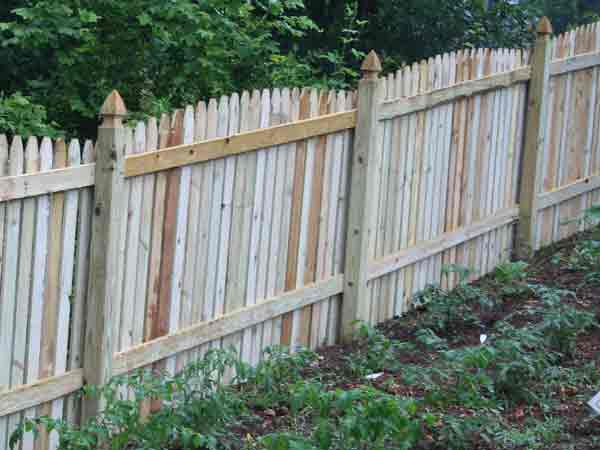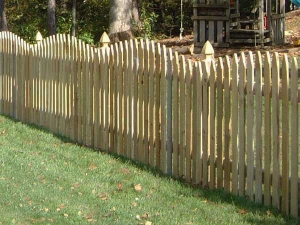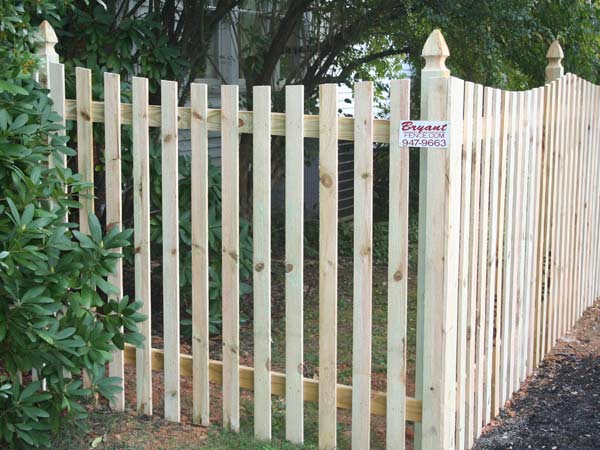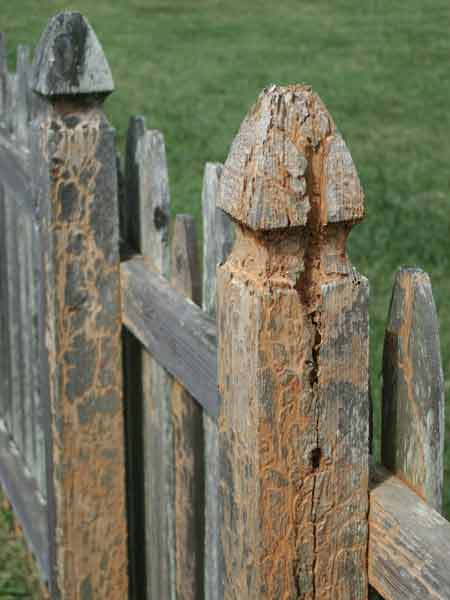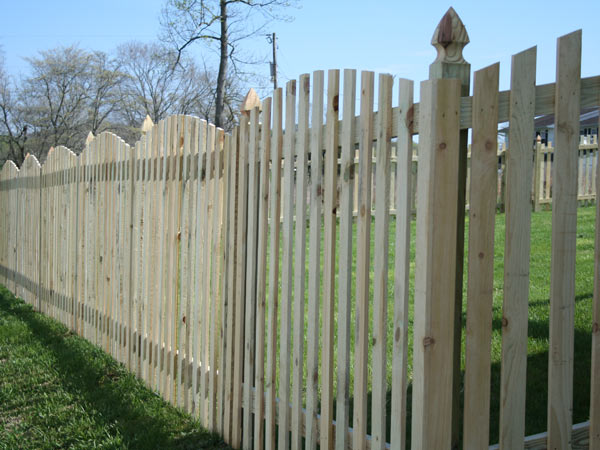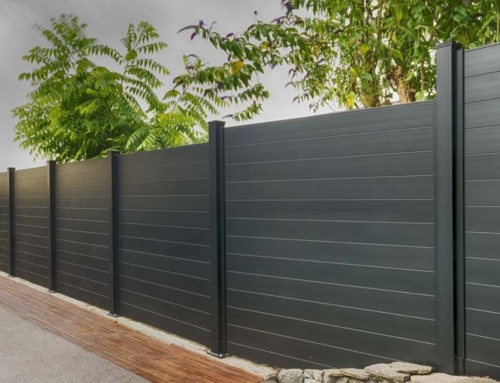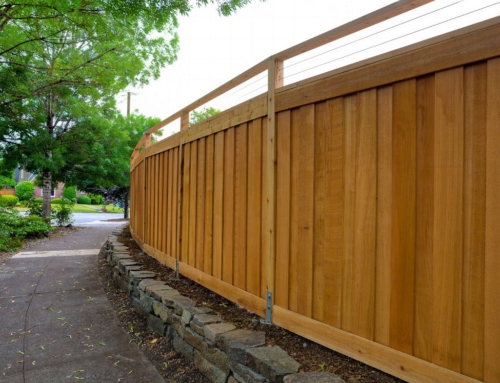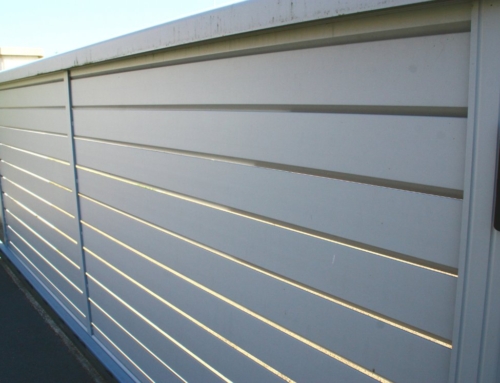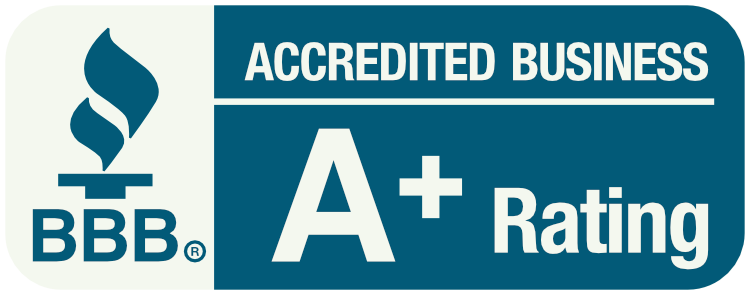Sevierville – Decorative Picket Fence
DIDN’T GET THE MEMO!
Can’t build a beautiful decorative picket fence in natural wood that is chemically treated for termites? HOGWASH! WE DIDN’T GET THAT MEMO! Of course, we can build your beautiful fence style in natural wood that is WARRANTED FOR 10 YEARS AGAINST TERMITES FOR STRUCTURAL DAMAGE! East Tennessee is in the heart of the TERMITE BELT, and that means there are plenty of those bugs searching for wood to eat! So why buy a natural wood fence that is not really protected from termites? Be careful of “KNOCK OFF CEDAR” products that are naturally resistant to insects… there’s no warranty there…just an opinion!
OUR NATURAL WOOD DECORATIVE PICKET FENCE STYLES HAVE A 10-YEAR WARRANTY AGAINST INSECTS (TERMITES)!
PANEL FENCE VS. BUILT ON SITE: YOU CHOOSE YOUR FENCE!
So, what’s the difference between a decorative picket fence, panel built fence, and one that is built on-site? Both methods of fencing have their pros and cons, and we let you make that decision.
PANEL BUILT WOOD PICKET FENCING
First, let’s look at the panel-built products. A lower cost is achieved because by building in the factory workshop we’re using, which has lower labor costs with a highly productive operation. Once the picket topping is chosen along with the spacing for the rails and pickets, then panels are built on a jig (like building a pallet) with no real skill involved. Installation is stick-built about half the time since only posts are set and sections are nailed to the posts. Overall costs are lower for the panel-built wood picket fencing.
So, what’s the downside? Several, even though you have a lower cost, you will have a production effect on the fence.
For instance, when figuring up a fence, the entire footage is broken down per complete section. When installing the fence, at the end of a line run, the last section is cut and then the leftover is used on the other side (saving money at the expense of aesthetics). So in effect, a wave fence section is split over a corner post and the fencing continues on.
Racking a decorative picket fence panel weakens the fence panel. What is racking the panel? Panels are nailed square at the woodshop and during installation, the panels are forced out of square (racking) to accommodate elevation changes in grade (hills). This keeps the pickets vertical when the section climbs a hill, which unfortunately also bends the nails and weakens the section. The steeper the incline, the more the nails bend.
Since the decorative picket panel is built square in the woodshop, that means the bottom of the fencing is a straight line. Even when racking up a hill, the fencing will maintain a straight line. This is great for smooth yards, but if you have gaps in the yard, they will not be secured with this fencing method. For pet security, you will need to take further steps to secure them.
BUILT ON-SITE – STICK BUILT WOOD PICKET FENCING
A decorative picket fence is a great fence choice for East Tennessee with all the hills and valleys and uneven dips in the yards. You may not notice the dips in the yard until you look for them. Your contained pets will be checking out the entire bottom of the fence!
On-site construction will cost more than wood shop panel-built fencing because you have a skilled crew on-site building your entire fence from scratch. The pickets are already cut and the backing rails are ready for assembly, but you need an eye for quality fence construction. The stick-built styles with top trim outs (Charleston, Windsor) offer an additional feature of dropping the picket boards to the ground to close up gaps in the yard. Once construction is complete, the top of the fence is trimmed out with a carbide saw blade for a clean cut.
Since the setting of posts is not constrained to section size, the crew can set the posts in each line evenly spaced. This will achieve a smooth run for each section, versus the panel-built wrapping corner method. There is a little more wood scrap here, but I think this is a much more professional look for the yard.
Climbing hills, common in East Tennessee, are not a problem for the stick-built fence construction. Since they are nailed on-site, no bending or weakening of the nails (to rack a section) is required. This results in stronger, tighter wood picket fencing.
Check out these gorgeous decorative picket fence natural wood styles below!
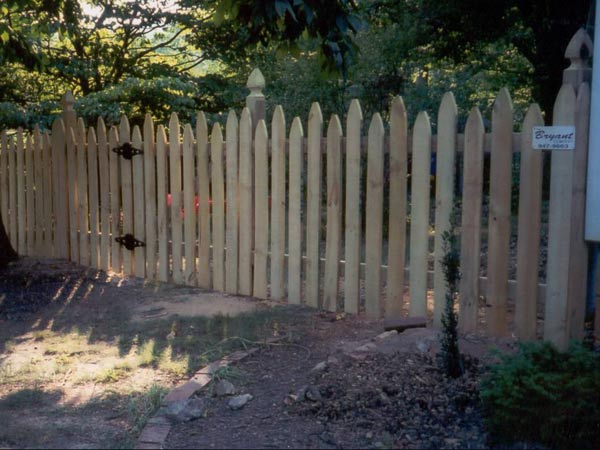
English Gardens natural picket fence

